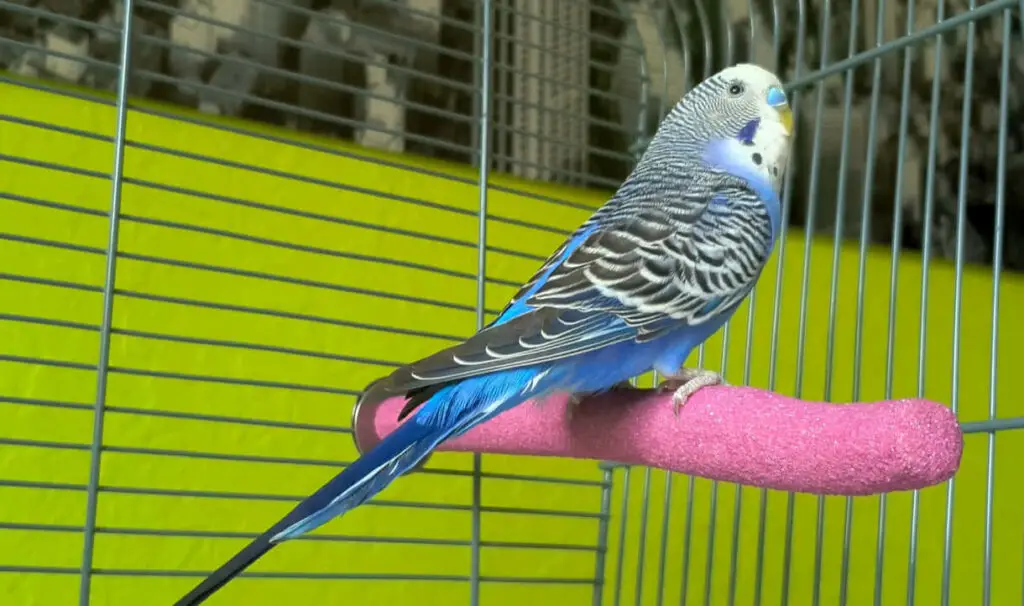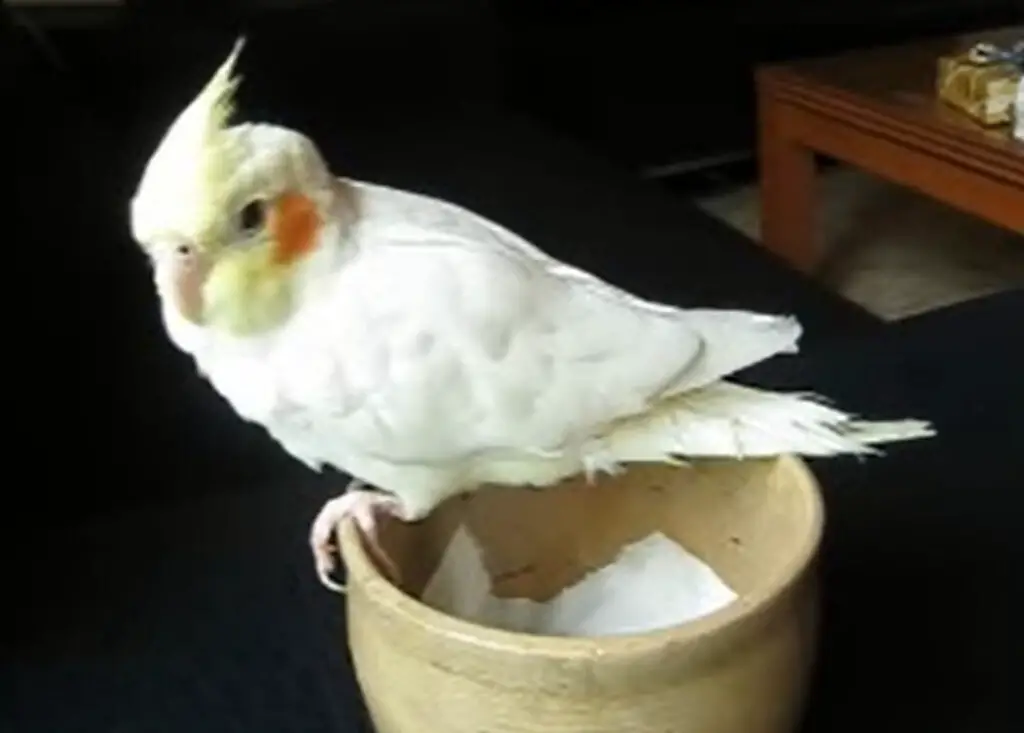After your budgies successfully lay eggs, it is quite possible that the eggs do not hatch. You will be bewildered why the eggs never hatch. But you should find out when can it be determined that the eggs will not hatch and when to remove unhatched budgie eggs. This is an important issue to help you ensure the health of your baby budgies and the habitat of the bird’s nest.
This article aims to provide a comprehensive guide on identifying the appropriate time to remove unhatched budgie eggs, considering factors like viability, duration of incubation, physical changes, consulting with professionals, and ethical considerations.

Contents
When to Remove Unhatched Budgie Eggs?
Determining whether an egg hatches slowly or doesn’t hatch depends on many factors. One of the most important factors is time. Eggs that have passed their hatching time for too long will almost forever not hatch. This will be the time when you need to help female budgies remove unhatched eggs to ensure the health and habitat of the entire nest.
On average, budgie eggs hatch within 18 to 21 days of incubation. Unfortunately, there can be a number of reasons why a budgies’ eggs won’t hatch. You should wait at least four weeks after the expected hatching date before discarding any unhatched eggs.
And always remember that it is illegal to remove a native bird’s nest while it is still active.
How to Determine Unhatched Budgie Eggs?
If you monitor the incubation process carefully, you will notice changes in the budgie’s eggs. Whether the eggs develop well or show signs of not hatching, there are certain signs. And here are the factors that determine unhatched budgie eggs.
Signs of Unhatched Eggs
Candling, the process of shining a light through an egg to observe the embryo’s movement and development, is a valuable tool for assessing egg viability. If an egg does not show any movement, such as rocking or slight shifts, it may indicate that the embryo has ceased developing. Similarly, the absence of a discernible heartbeat or visible blood vessels during candling can be indicative of non-viability. As the incubation period progresses, viable eggs should exhibit clear signs of growth.
Additionally, eggs that maintain an unchanged appearance over an extended period may suggest developmental arrest. Healthy embryos undergo noticeable changes as they mature. If an egg remains static in terms of size, shape, and opacity, it could be a sign that the embryo is no longer developing.
Duration of Incubation
Understanding the typical incubation period for budgie eggs is crucial for gauging the viability of unhatched eggs. On average, budgie eggs hatch within 18 to 21 days of incubation. However, deviations from this timeline can signal potential issues. In some cases, hatching might be delayed due to variations in temperature or humidity during incubation. Yet, if an egg remains unhatched even after the typical incubation period has passed without any progress, it’s a strong indication that the embryo inside may not be viable.
Odor and Visual Changes
Monitoring the condition of unhatched eggs extends beyond visual observations. A foul or unusual odor emanating from an egg is a concerning sign, often indicating bacterial growth or decay. As the eggshell provides a protective barrier, any cracks or leaks can introduce harmful bacteria, compromising the health of the embryo.
Discoloration or mold growth on the eggshell is another visual cue of potential issues. A healthy budgie egg maintains a consistent appearance, but changes like discoloration could indicate internal problems. Regular checks for any unusual appearance, smell, or texture can help determine whether an egg is still viable.

How to Remove Unhatched Budgie Eggs?
When it becomes evident that an egg is unlikely to hatch, it’s important to handle its removal with care. Here’s a step-by-step guide on how to properly remove unhatched budgie eggs:
Materials Needed
- Clean gloves
- Tissue or paper towel
- Small container or bag for disposal
- Disinfectant (optional)
- Hand sanitizer (optional)
Steps to remove unhatched budgie eggs
- Prepare the Area and wear gloves
Before you start, ensure you’re working in a clean and well-lit area. Wash your hands thoroughly or use hand sanitizer to maintain hygiene. Put on clean disposable gloves. This prevents any potential contamination and helps you handle the eggs without transferring oils or bacteria from your skin.
- Gently Remove Eggs:
Hold the egg gently but firmly between your gloved fingers. If the egg is stuck to the nesting material, gently detach it using your fingers or a tissue. Avoid squeezing the egg, as this can damage it.
- Inspect the Egg:
Take a moment to examine the egg closely. Note any signs of damage, discoloration, or odor. This inspection can help you understand why the egg didn’t hatch and provides insights for future breeding attempts.
- Dispose of the Egg:
Carefully place the unhatched egg into a small container or a sealed plastic bag. This prevents any potential odors or contamination from spreading. If you’re using a container, you can seal it with a lid or plastic wrap.
- Clean Up:
Once you’ve removed the unhatched eggs, clean the area where the eggs were located. Use a mild disinfectant if needed, ensuring that it’s safe for the budgies and their environment. Wipe down surfaces and replace nesting materials if necessary. And finally, wash your hands with soap and water.
- Emotional Considerations:
Understand that removing unhatched eggs can be emotionally challenging, especially if you’ve invested time and hope into the breeding process. Give yourself time to process your feelings and remember that making responsible decisions benefits the health of the parent budgies and any potential future hatchlings.
It’s important to approach the process with sensitivity and responsibility. If you have any doubts about the condition of the eggs or if you’re unsure about the removal process, consider seeking advice from an avian veterinarian. They can provide guidance based on your specific situation and ensure the well-being of your budgies.

What Happens If You Do Not Remove The Unhatched Eggs?
If you do not remove unhatched budgie eggs, several potential outcomes and consequences can arise:
- Spread of Contamination: Decomposing eggs can lead to the release of foul odors and attract bacteria and pests, potentially leading to contamination of the nesting area. Bacterial growth can negatively affect the health of the parent budgies and any other eggs or chicks present.
- Waste of Resources: Continuing to incubate and care for non-viable eggs consumes valuable resources, such as the parent budgies’ energy and the nesting materials. These resources could be better utilized for the care of healthy chicks.
To avoid these potential issues, it’s recommended to assess the viability of eggs through candling and remove unhatched eggs. This practice promotes the health of the parent budgies, fosters a cleaner and more hygienic environment, and increases the chances of successful breeding in the future.
How Do You Take Care Of Budgie Eggs?
To ensure the quality of budgie eggs, you need to carefully monitor them throughout the egg laying process and prevent future risks.
Monitoring and Documentation
Keeping meticulous records of the incubation process is essential for successful budgie breeding. Documenting important dates, such as when the eggs were laid and when incubation began, can help track the progression of each egg. Regular observations, including candling results and any visual or odor changes, should also be recorded. These records provide valuable insights into the breeding process and can inform future decisions.
Preventing Future Issues
Learning from each breeding cycle is key to improving outcomes. Regularly assessing the health and compatibility of the breeding pair can prevent issues like infertility or unsuccessful hatching. Reviewing incubation techniques and conditions, like temperature and humidity levels, ensures that the eggs have the best possible environment for development. Each breeding experience provides an opportunity to refine practices and increase the likelihood of successful hatching.
Conclusion
Breeding budgies is a rewarding endeavor that demands responsible practices and a deep understanding of the avian reproductive process. Knowing when to remove unhatched budgie eggs is a critical aspect of this journey. By recognizing signs of non-viability, understanding the typical incubation period, monitoring for physical changes, seeking professional advice, and maintaining ethical considerations, breeders can navigate this challenging decision-making process. Ultimately, the welfare of the parent budgies and the quality of life for potential hatchlings should always be the guiding principles in budgie breeding.







